Neukruger Straße / Ecke Suckower Graben
18273 Güstrow
Germany
Enclosed cemetery with gravestone inventory. 7 tombstones and one memorial stone.
Tombstones:
D. Cohen - David ben Meir Kaz {edit 10/19/21 - own &translation: Signe Winter}
[B]runo Frank - Zvi {edit 10/19/21 - own &translation: Signe Winter}
Särchen Pincus, née Meyer Loeser - Särche bat Meir {edit 10/19.21 - own &translation: Signe Winter}
Rebecca Bragenheim - Chaja bat Gedalja {edit 19.10.21 - own &translation: Signe Winter}
Suse Hirsch, née Landsberg - Susa bat Zvi {edit 19.10.21 - own &translation: Signe Winter}
Widow of Isaak Seelig, née. Nocham - Reichel bat Nachum {edit 19.10.21 - own Übersetzung: Signe Winter}
Double gravestone - Pessche bat Elieser Lippmann (left) and Meir bar Nathan ha-Kohen (right) {edit 19.10.21 - own Übersetzung: Signe Winter}
_______________________________________
In Güstrow existed already in the Middle Ages a Jüdischer cemetery, which is in the Nähe of the cathedral meadows before the Hageböcker gate in the direction of Schwerin to have lain. With the resettlement of Jews in the second half of the 18th century, the dead of the community were initially buried in foreign cemeteries. Finally, in 1804, the Jewish community acquired a plot of land on which a new Jewish cemetery was established.
The date of the last burial during the Nazi period was recorded on December 2. In the following years, mainly due to the November pogrom in 1938, the cemetery was vandalized and the cemetery hall was set on fire. In 1933, 118 people lived in Güstrow, in 1941 only 16, and in 1945 no more citizens of the Jewish faith. Since the Jüdische Landesgemeinde had to sell the cemetery site in 1954, a fence and a memorial stone draw attention to the last seven remaining gravestones.
On August 26, 2000, several gravestones were knocked over and damaged by unknown perpetrators. Eight years later, the police investigated again because of the use of symbols of anti-constitutional organizations in the cemetery.
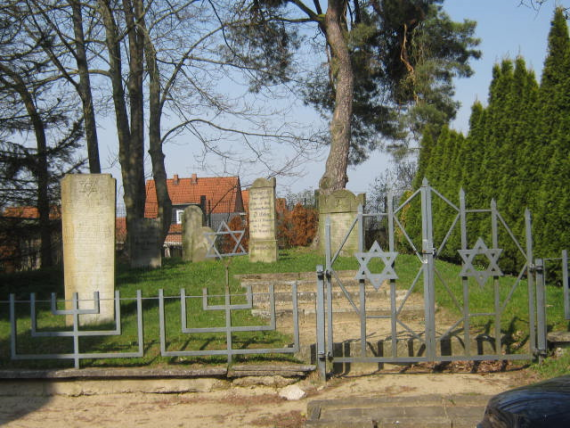
(Source: Gerhard Voß, Jüdische Friedhöfe in Mecklenburg - eine Bestandsaufnahme, p. 10f.)
(Source: Winter, Signe, How to find a Jewish cemetery, Spurensuche in Güstrow, p. 12)
This grave shows in the upper part the hands of the Kohanim and the crown of the good name; in the lower part a symbol is barely recognizable - it could be the symbol of an oil lamp ..."
(Source: Winter, Signe, How to find a Jewish cemetery, Spurensuche in Güstrow, p. 12)
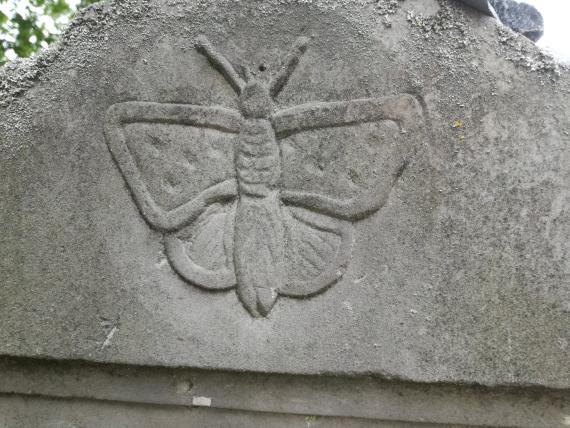
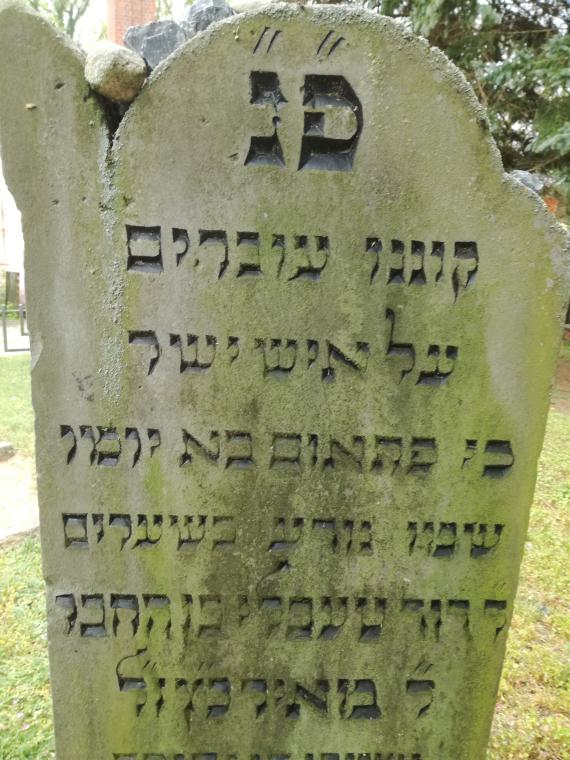
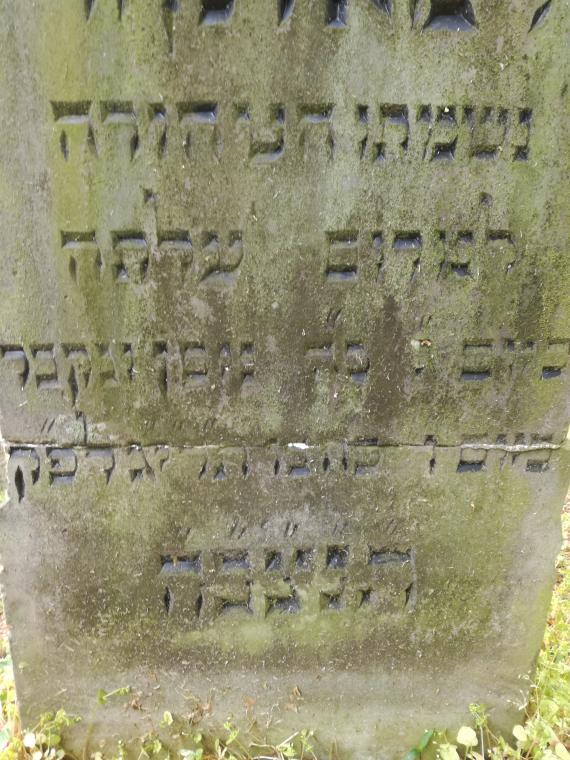
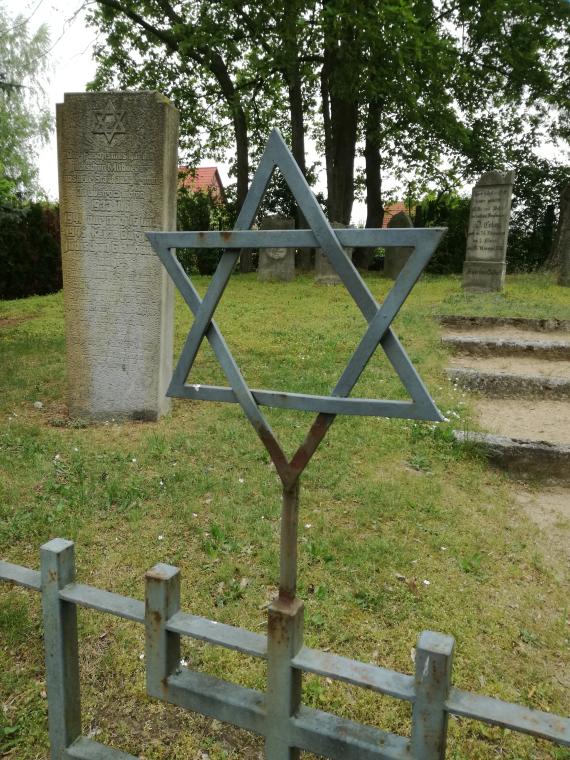
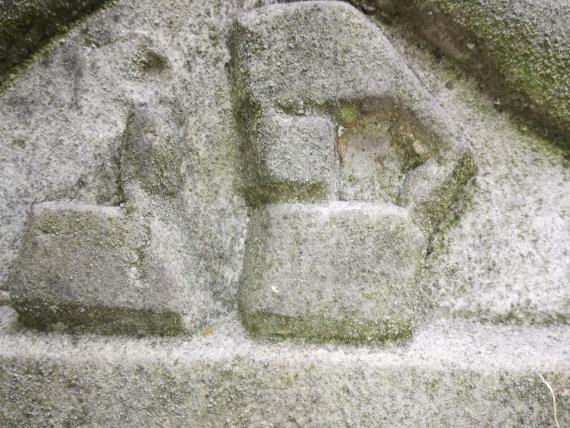
pe nun = Here is/lies buried = po nikbar, po nikbera/po nitman, po nitmena: פנ
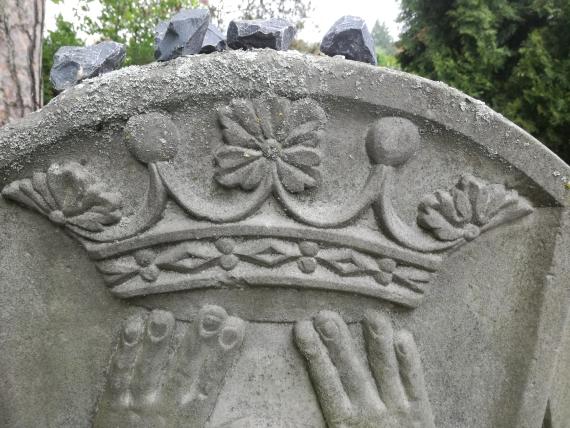
Crown of Priesthood: It is depicted on the tombstone of a member of the priestly family of Kohanim. This symbol is often found in conjunction with a Torah or blessing hands.
Crown of loss: Thr 5:16: "Fallen is the crown of our head." This crown symbolizes the loss of a family head or community leader.
Crown of the husband: Prov 12:4: "...crown of her husband". This crown is often seen on a woman and traces back to the verse in Proverbs.
From: http://www.israelogie.de/2014/juedische-symbolik-auf-dem-friedhof/
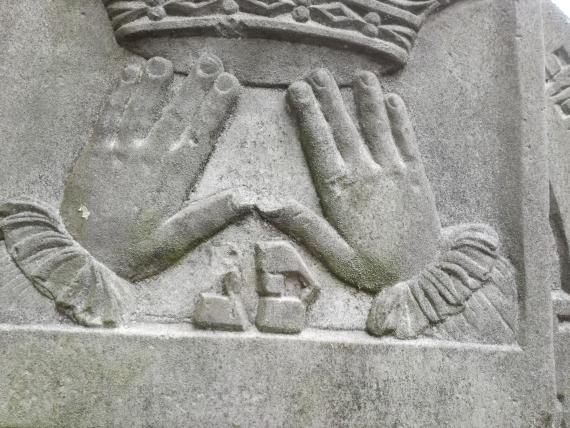
https://glaube-im-alltag.weebly.com/uploads/1/0/8/0/10808509/juedische_grab-symbole.pdf
Under it one of the introduction formula usual on gravestones:
pe nun = Here is/lies buried = po nikbar, po nikbera/po nitman, po nitmena: פנ
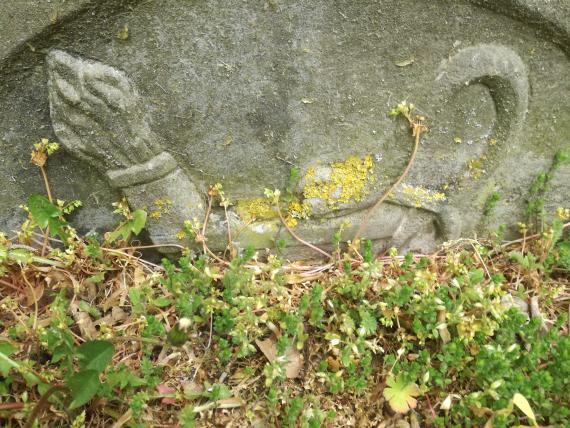
http://elpub.bib.uni-wuppertal.de/edocs/dokumente/fb05/diss2002/meis/d050203.pdf, P. 113
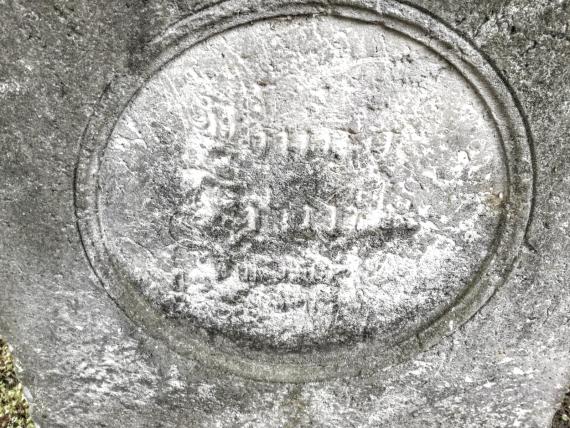
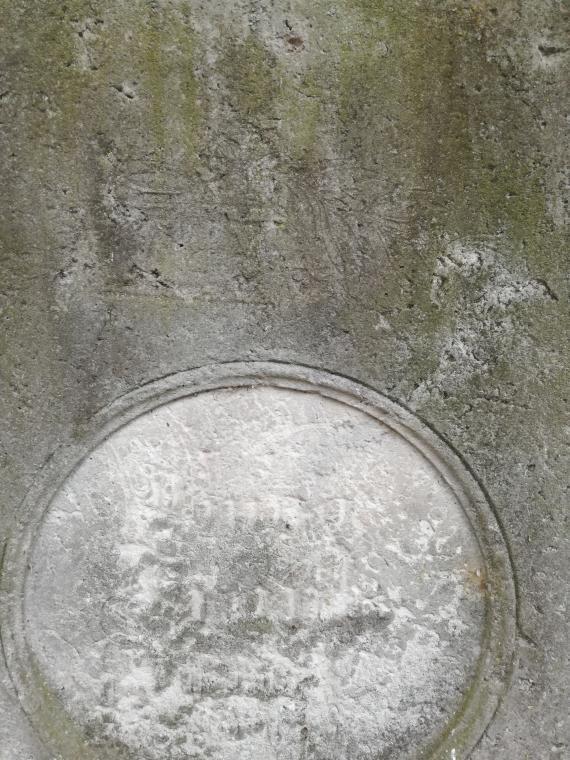
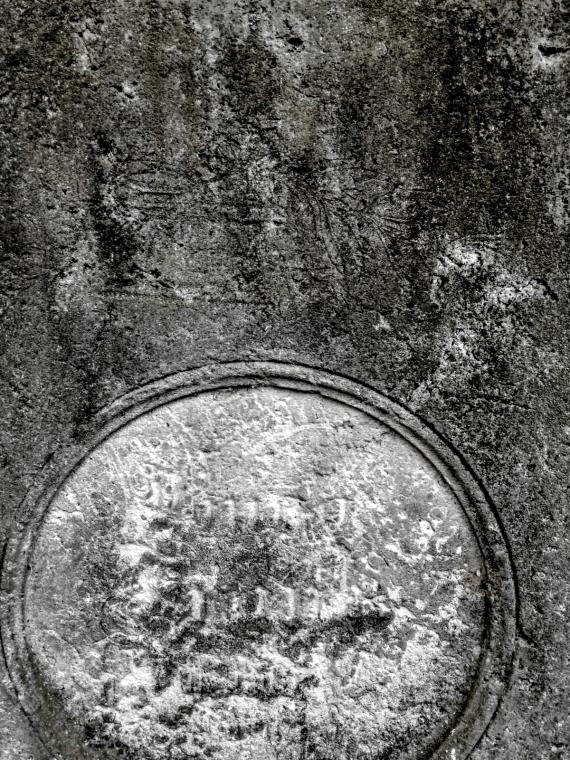
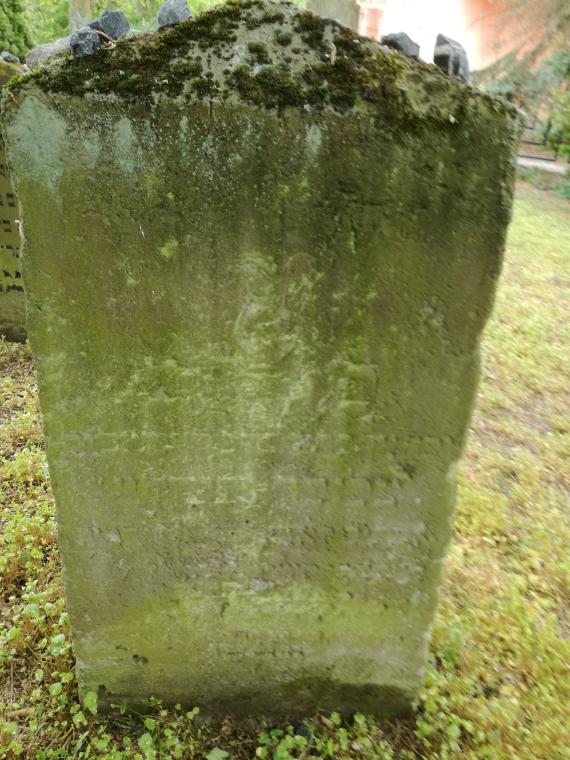
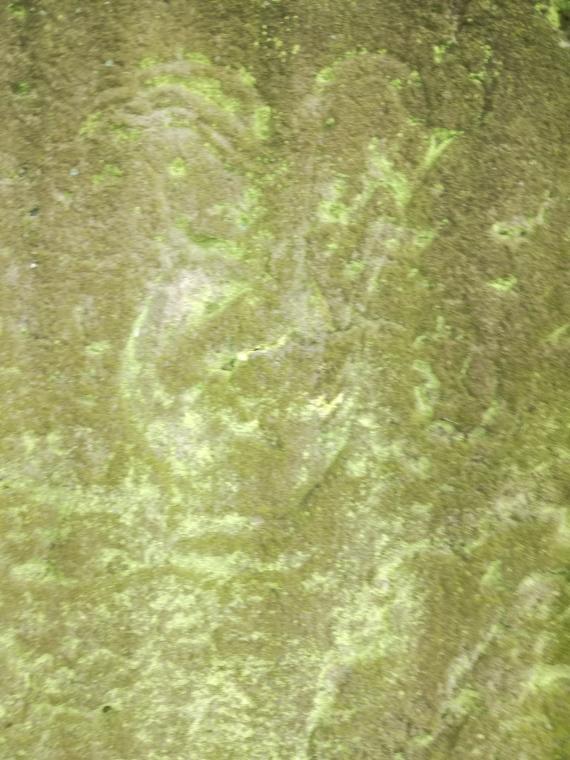
On gravestones of Jewish cemeteries the symbol of the jug is often found. The Levitical jug is depicted in various forms: As a bulbous washing pitcher, usually with a saucer, or as a tall slender pouring vessel, often influenced by contemporary pouring and washing vessels. Sometimes they are engraved, but most often they emerge sculpturally. They usually decorate the pediment or rarely the base of a tombstone.
https://de.wikipedia.org/wiki/Levitenkanne
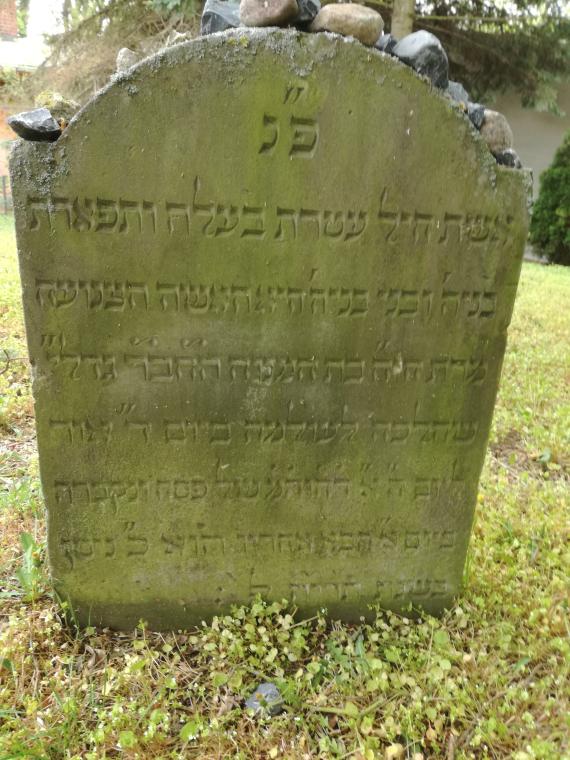
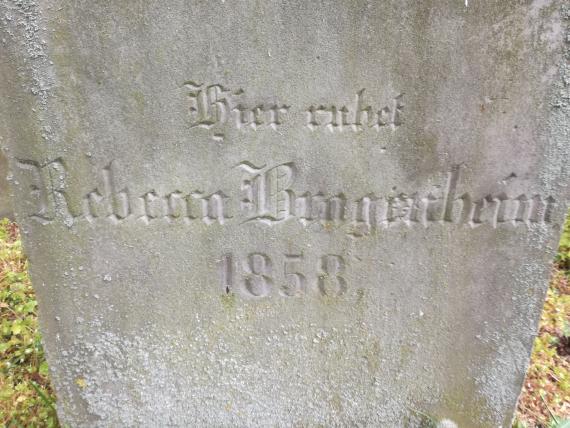
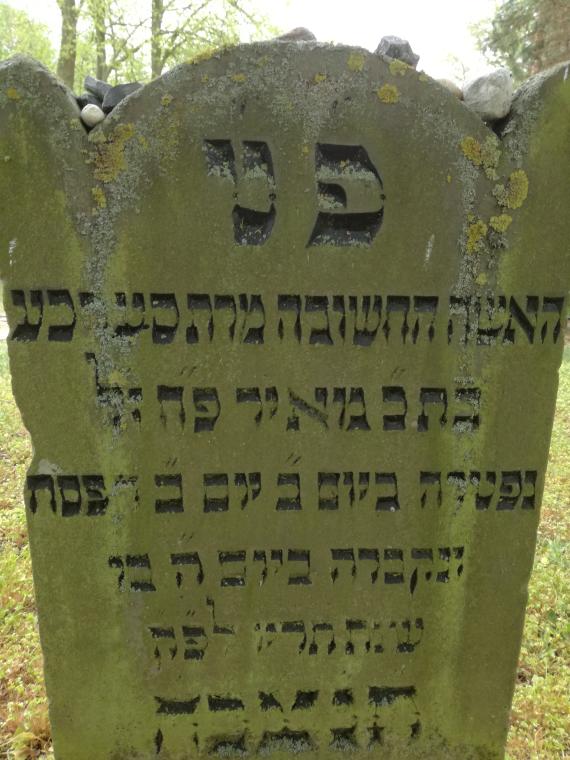

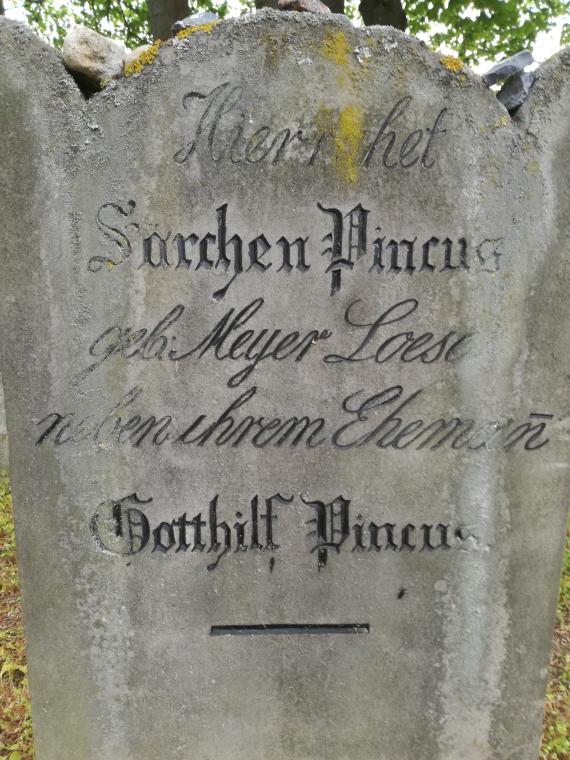
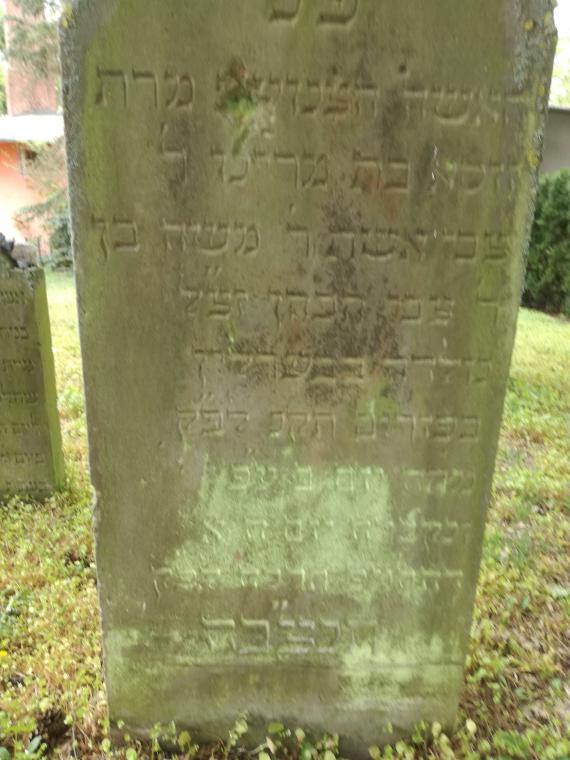
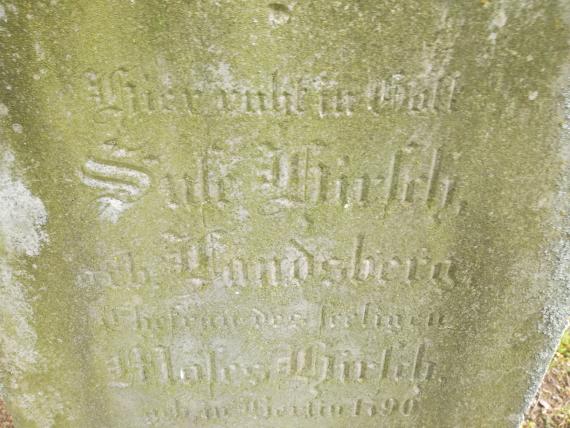
Here rests in God
Suse Hirsch,
née Landsberg
Wife of the late
Moses Hirsch
born in Berlin 1790
died April 10, 1865
Peace to her ashes
Bliss her part
She slumber gently

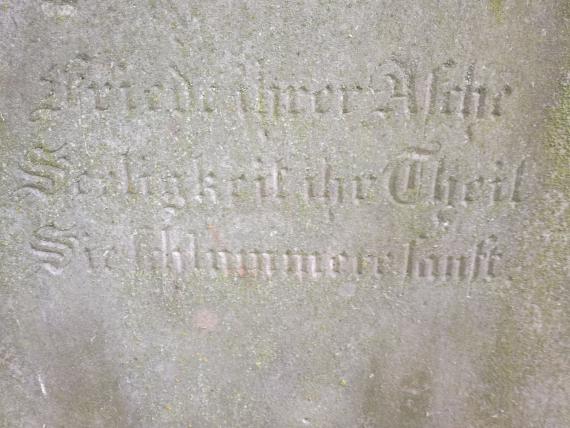
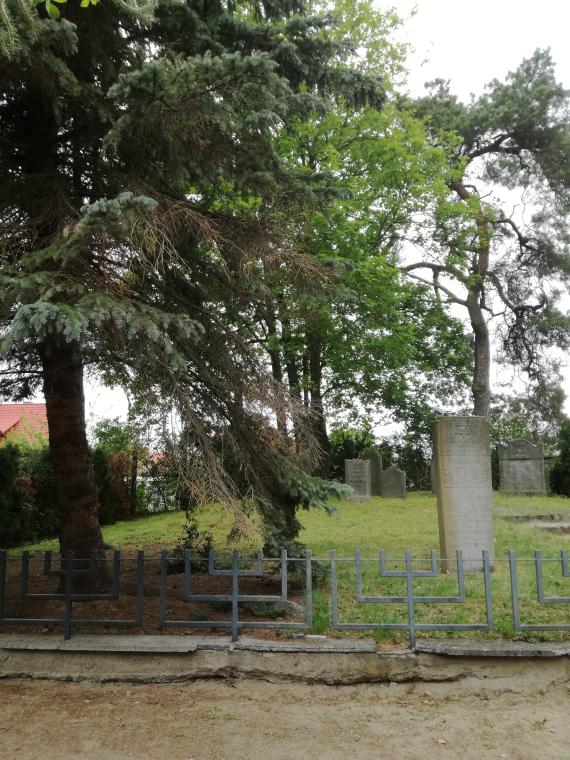
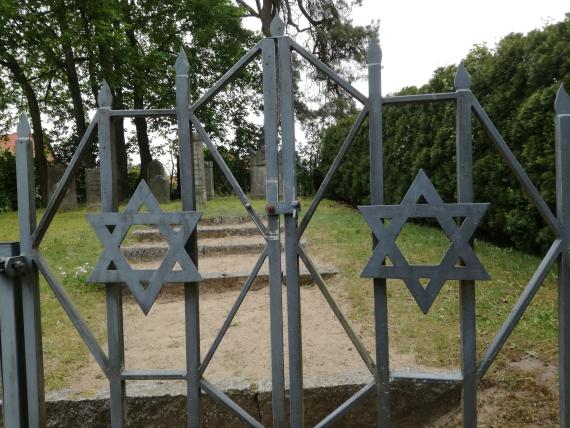
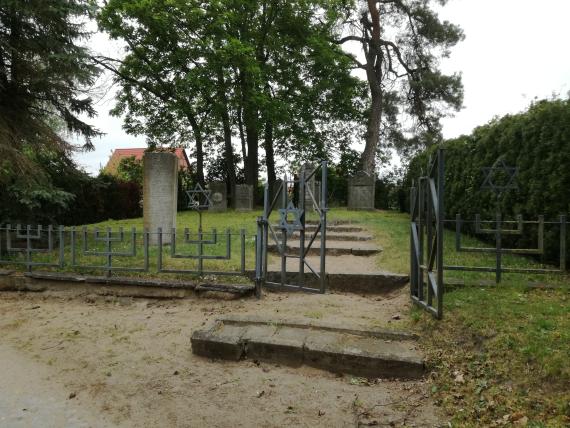
In August 2000, with the subsidies of the state by the company Höpcke Naturstein GmbH, the stones will be renovated and erected, on two stones the characters will be traced, the wild growth will be cleared and a hedge of arborvitae will be planted.
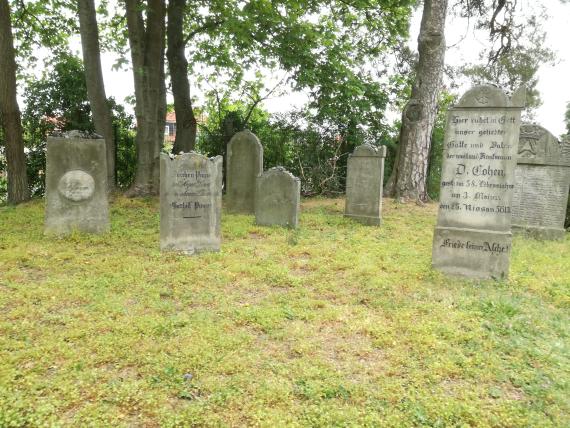
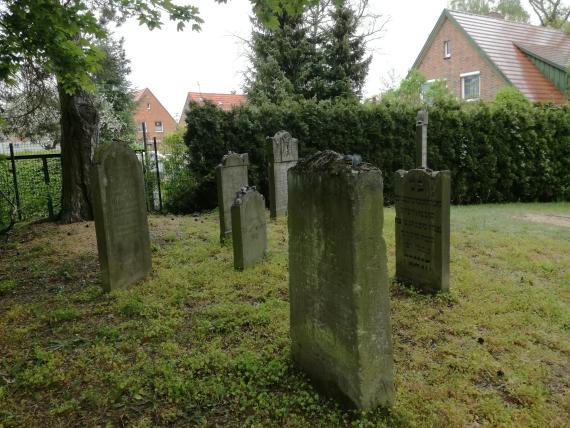
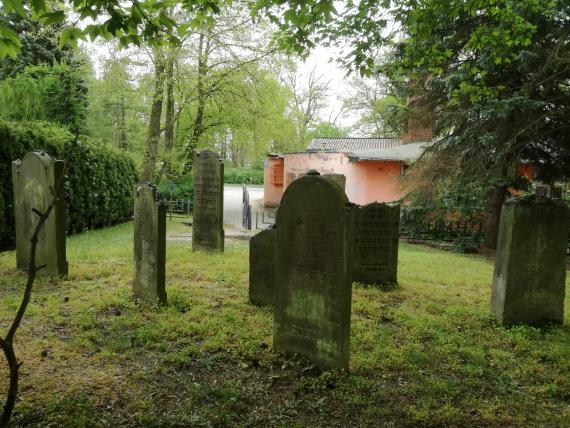
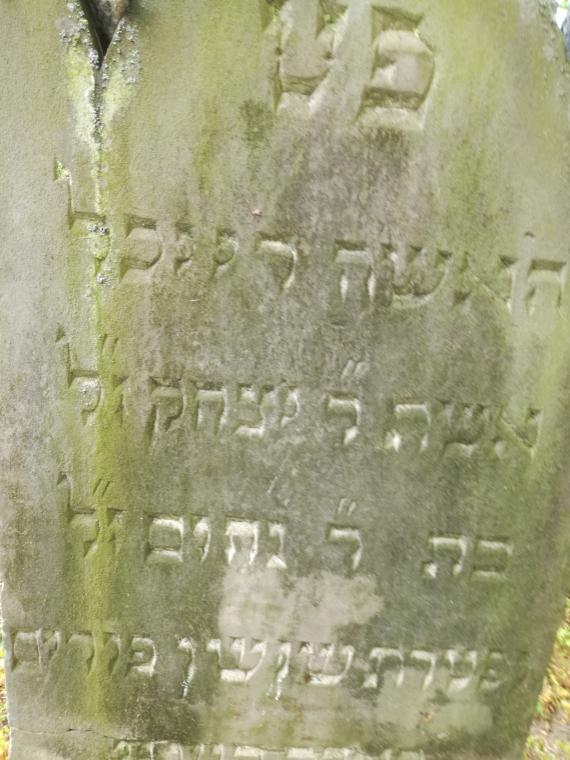
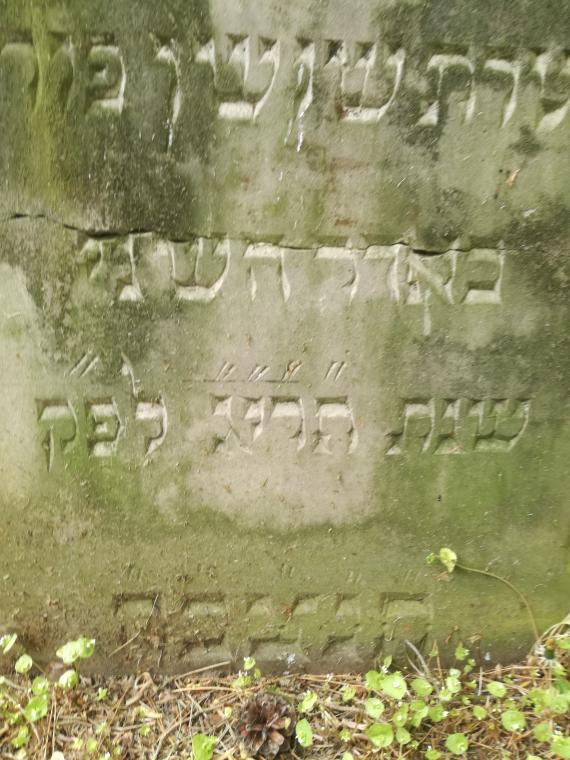
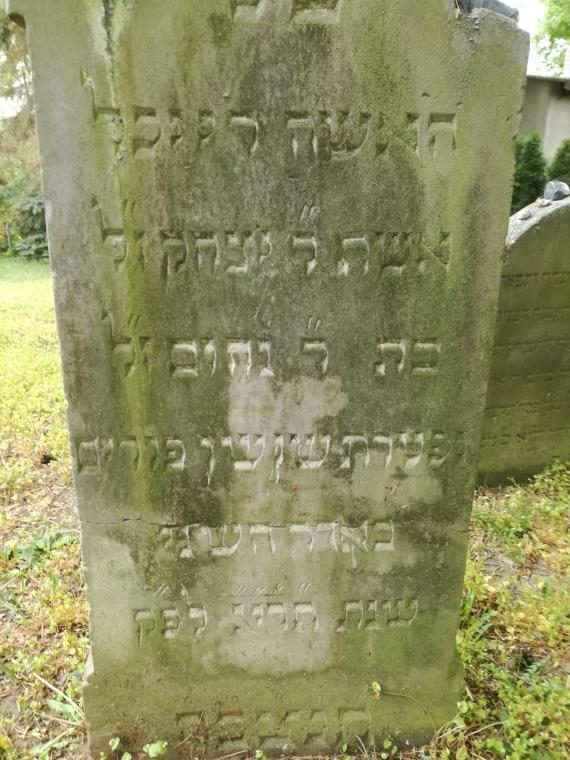
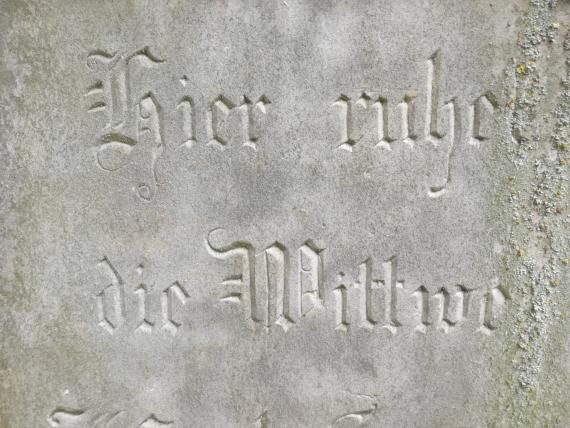
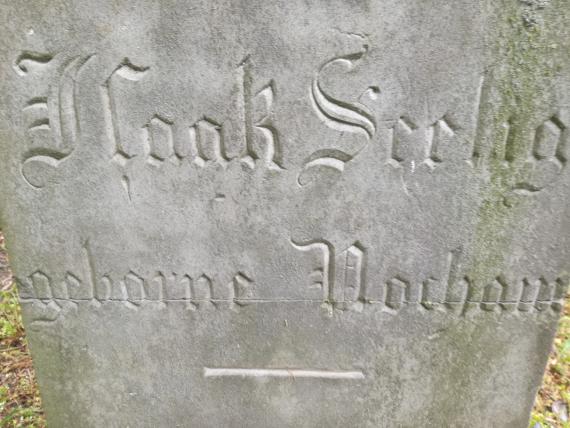
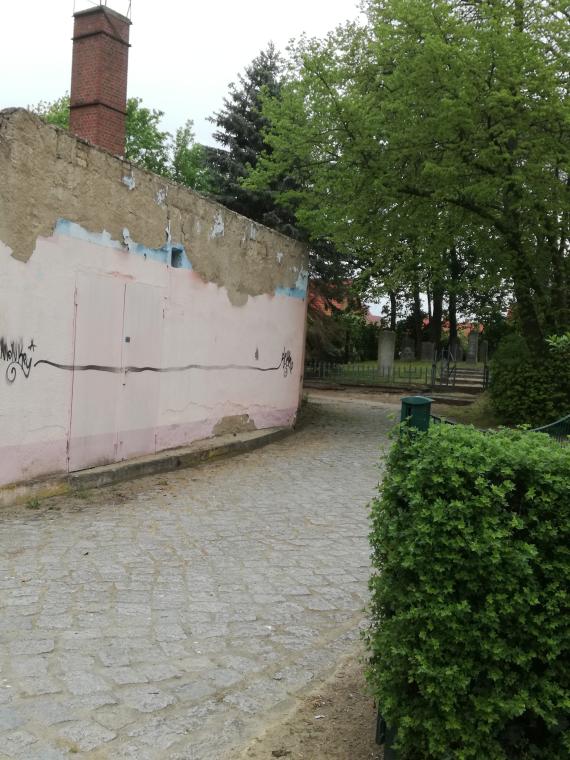
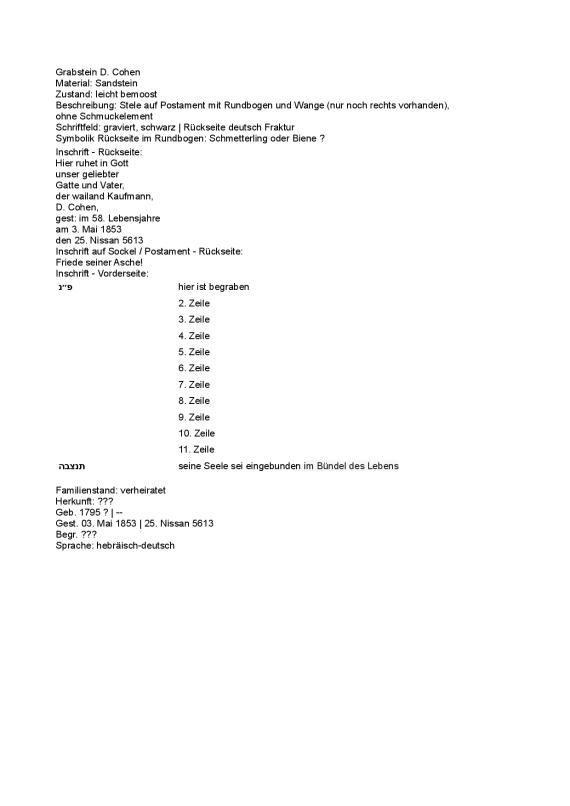
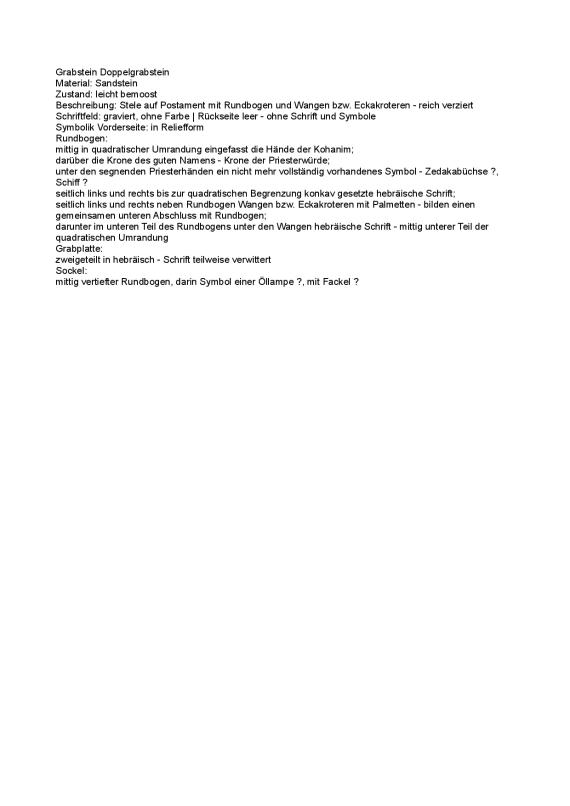
edit October 2019:
Contrary to the previous own assumption that the symbol below the hands of the Kohanim could be the symbol of a ship or that of a Zedaka rifle, it can be said after repeated analysis with certainty that it is one of the usual introductory formula on gravestones:
pe nun = Here is/lies buried = po nikbar, po nikbera/po nitman, po nitmena: פנ

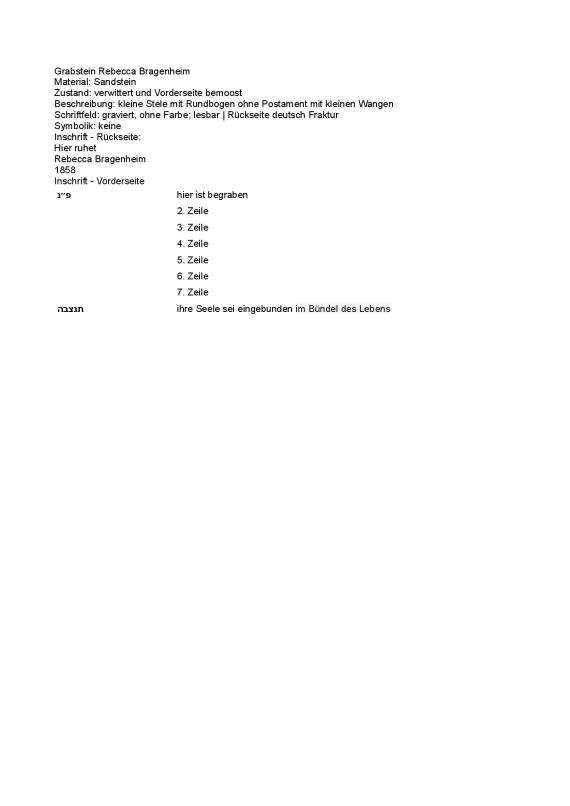
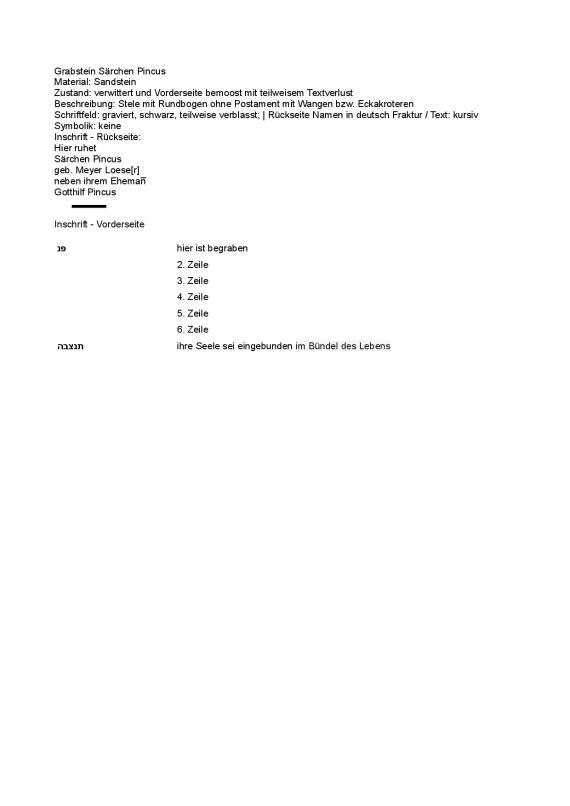

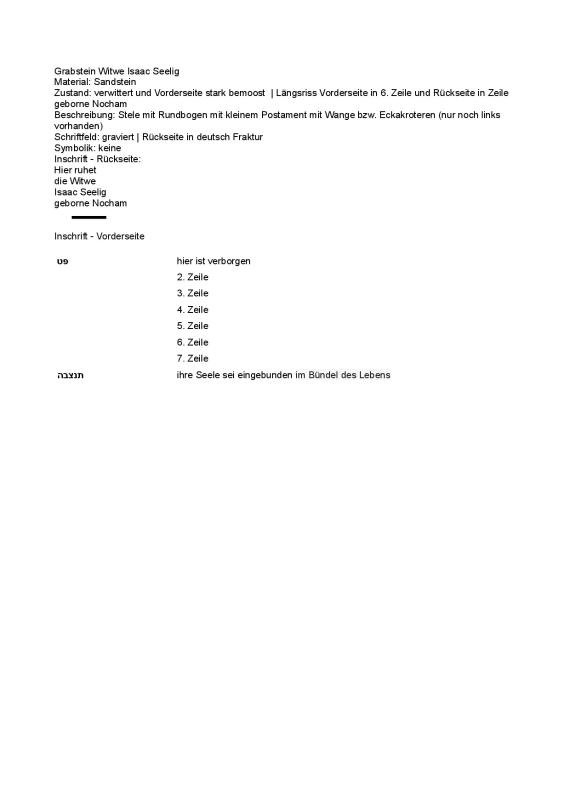
siehe weiterführende Links [auf dieser Seite], mit Quellenverweisen auf Stadtarchiv, Mecklenburgische Urkundenbücher etc.
Add new comment